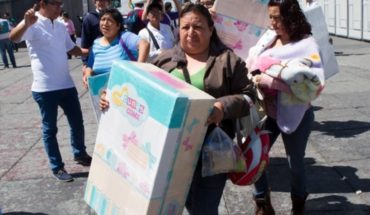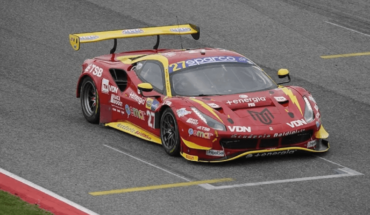The theaters return in buenos Aires. In view of the gradual reopening of activities under Social, Preventive and Compulsory Estating (DISPO), this was authorized by the national government after almost eight months in which face-to-face shows were interrupted in the face of the outbreak of the pandemic by COVID-19.” Except for the fulfilment of social, preventive and compulsory isolation and the prohibition on the movement of persons in the departments or agglomerates achieved by Article 9 of Decree 875/20 (mandatory isolation) and who are affected by activities relating to the development of performing arts with and without the assistance of spectators”, it supports the 2045 administrative decision, published in the Official Gazette with signature of the Chief of Staff, Santiago Cafiero, and the Minister of Health, Gines González García.
So already some resorts of the City of Buenos Aires announced that they will open their doors with the following shows. The Teatro San Martín (Av. Corrientes 1530) will present “Happyland” in its sala Casacuberta; work written by Gonzalo Demaría and directed by Alfredo Arias. It can be seen from Friday 20th to 20.30th will return the functions for the general public.
Calle Corrientes
While Flavio Mendoza and his team will return to the activity with “A Premiere or a Velorio” at the Broadway Theater (Av. Corrientes 1155), which on the initiative of the dancer, producer and choreographer was re-conditioned to comply with the corresponding Health Protocol. This is how the Kirchner Cultural Center (CCK) will also open its doors next Saturday, November 14 at 2 p.m., and will have as protagonists the organist Matías Sagreras at the Klais Opus 1912, the duo composed of Nadia Larcher and Andrés Beeuwsaert, and with the pianist Horacio Lavandera in the big closing.
In May of this year, in dialogue with this medium, theatrical entrepreneur Carlos Rottemberg defined the artistic season as “debut and farewell”. “As far as activities like ours are concerned, which have to do with the commercial circuit of the theatrical and musical show, the year ended and ended in March,” he argued. In this way, Rottemberg mentioned that this 2020 “season is lost”. “I think it’s appropriate for us to know that because it’s a way to calculate how everyone’s going to get from their company, of course trying to defend the mass of workers who make up the groups in each theatrical building. Understanding also that in our circuit we must have no advantage other than that which can give the national government’s guideline and yes, to fight with the support to the fullest that it has to do with independent theater and any cultural activity in which the commercial angle does not prevail,” he explained, “What are the measures for the public and artists?
The Télam agency unveiled the guidelines to be followed to ensure a return according to the epidemiological situation and that prevent contagions:For the public
You will not be able to exceed 50% of the capacity of the rooms. In the City of Buenos Aires, for example, official sources confirmed to Télam that at first it will be even lower: 30%.
The theatrical activity will have its own specificities, in addition to mandatory use of tapaboca, reduced work equipment, cleaning and ventilation of environments on a regular basis.
Whenever possible, the issue of tickets through digital systems will be recommended, where long as if it is not possible a distance of two metres will be required between the persons intended for the attention of the public and theirs with customers.
Entry into space will be made by groups according to the area in which they are assigned their seats.
If the judicial authority so allows, the location may be used by “social bubble”.
If more than one function is performed per day, the input and exit of the public between functions may not be less than 45 minutes.
For artists
On the stage one person will be allowed every 2.25 square meters in relation to the dimension of the scenic space.
Only what they call “fleeting crosses” (movements or brief contacts between artists that do not involve frontality between faces) will be allowed; in such cases, if dialogue occurs simultaneously at the fleeting crossing, they may not be interpreted face-to-face and sudden cries or physical movements should be avoided.
In this note:





